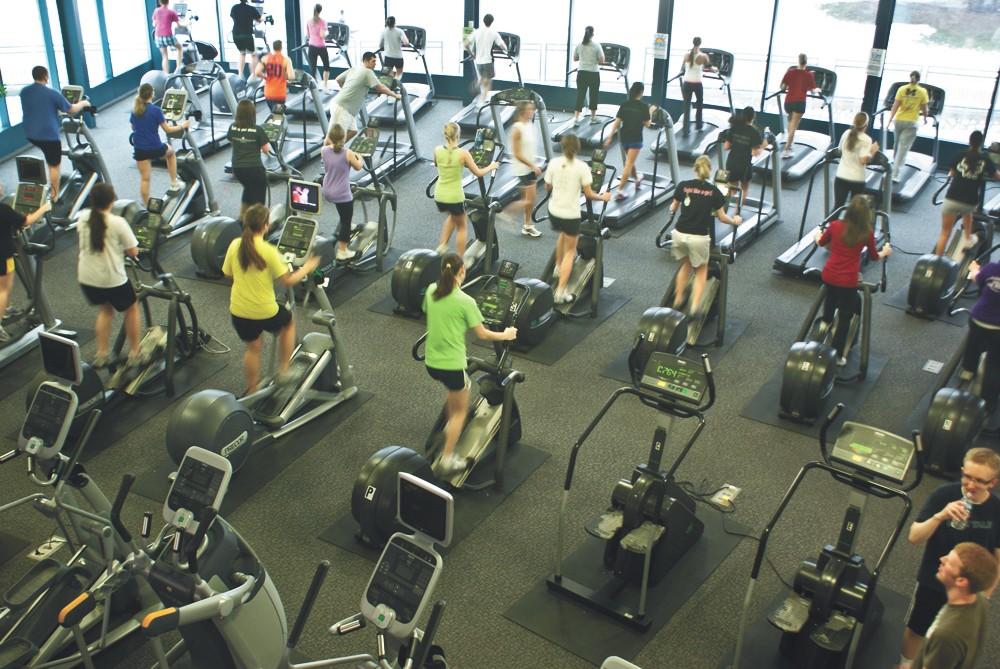Academic spending remains top priority

GVL Archive / Eric Coulter The Rec Center is an area where non-academic funds are being used on.
Sep 9, 2010
A recent study of college costs in the July 9 issue of The New York Times revealed that a declining portion of the annual budgets of most American colleges are being spent on instruction. The report suggests an increasing amount of the average budget is being spent on administration and recreational facilities for students.
The Times reported that average tuition rose 45 percent at public universities and 36 percent at community colleges between 1998 and 2008. While tuition rose this year across the nation as well, spending on non-academic areas such as athletics has remained consistently low at GVSU. The university is set to spend close to $184 million this year on academic affairs and student services, which encompasses almost 68 percent of the allotted $272 million for the 2010-11 school year.
However, Athletics and Fieldhouse Operations will receive close to $5.6 million this year, or 2.1 percent of the overall budget.
The overall budget for 2009-10 allotted for roughly the same low percentage; $5.4 million, or about 2.1 percent of the $255 million in total revenues was given to athletics. Tim Thimmesch, GVSU’s assistant vice president of Facilities Services, explained that the allocation of funding in the facilities planning budget for athletics for the 2010-11 year helped build the new intramural turf field.
“An annual budget process in October or November decides how much we spend on facilities,” he said. “Each building is different when it comes to athletics, compared to an academic (building) or a new eating center.”
Jim Bachmeier, GVSU vice president of Finance and Administration, said a plant fund would largely cover the money needed to finance additions or renovations to athletic facilities.
“There are a number of non-academic buildings that are crucial to the university,” he said.
Academics was given more than two-thirds of the budget that year as well, as the university dished out a little more than $175 million toward academics and student services.
The moderate increase in spending on athletics from $5.4 million to $5.6 million comes largely because of the addition of women’s lacrosse as a varsity sport this year. It was previously a club sport. Tim Selgo, GVSU athletic director, said most of the money that went into the recent addition came from last year’s initial increase.
While the budget has remained low for athletics during the past decade, there is a small chance that an increase could be seen within this one, largely due to renovations or expansions toward Lubbers Stadium.
“We are currently trying to develop an estimate of what an expansion and renovation of the stadium would cost,” Selgo said.
The revenue the varsity sports bring into GVSU each year account for a major amount of their budget for the next one. Selgo identified GVSU’s partner tier system, which includes big name brands such as Pepsi, Adidas and AT&T, as well as many local businesses as a crucial factor in generating revenue to use for the 2010-11 operating athletic budget.
“During the last fiscal year, we generated $390,000 via our partners,” he said. “In combination with our ticket sales, concessions revenue and fund raising dollars, the athletic department generated $1,146,442, which is better than most D-II schools and even some D-I schools.”
Despite the addition of the new south campus apartment living centers and the new dining center, The Connection, the budget was not adjusted to take away tuition dollars to pay for them. Revenue collected from meal plans and housing payments were used to fund the additions.
Bachmeier cited a major shift in on-campus housing trends during the last 15 years as key to understanding the long trends with non-academic spending.
“This campus primarily served for commuters in 1995, but we’ve seen significant changes over the last 15 years,” he said. “Spending has slowed, enrollment is not going as quickly and inflation is up- all of which leads to slower spending growth.”























